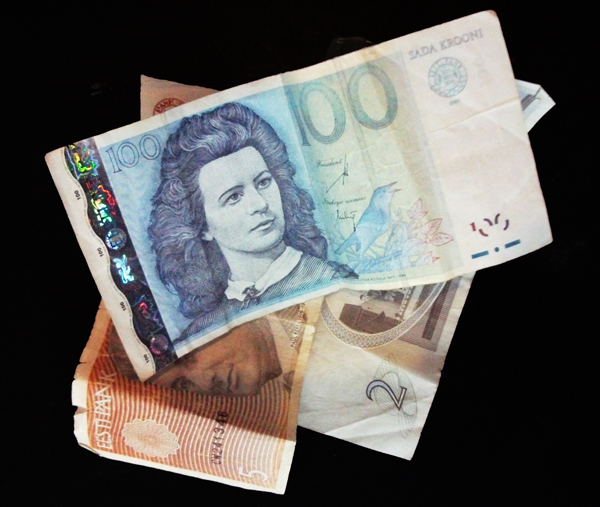 If you regard currencies as a measure of cultural diversity, the world will lose a little variety and become slightly more homogeneous on January 1. Another colorful currency will disappear with the dawn of the New Year.
If you regard currencies as a measure of cultural diversity, the world will lose a little variety and become slightly more homogeneous on January 1. Another colorful currency will disappear with the dawn of the New Year.
The Estonian kroon will be absorbed into the eurozone, and a whole cast of familiar faces will disappear from public recognition. The kroon bears the portraits of authors, scientists, jurists, politicians and poets (including Lydia Koidula, the lyricist for this beautiful song), as well as sketches of landscapes and villages. In place of this celebration of individuals and nature, the new euro notes will carry bland architectural studies of bridges. Currencies are more often than not miniature propaganda vehicles used to enforce nationalistic images and promote state-sanctioned heroes. But even so, at least they’re prettier than a bunch of bridges.
Less than a decade ago traveling around Europe meant packing a wallet fat with marks, francs, liras, pesetas and drachmas. Annoying as it might have been, the act of exchanging money was a ritual that informed the traveller they had arrived somewhere new and unique, with its own culture and iconography that had to be respected, or at least acknowledged. The irony is that while the euro made travel easier, it simultaneously made it more boring.
As for the Estonians, they’re in a state of uncertainty about the effect of the euro. For years it was a goal the country strove toward, squeezing the government budget to meet the requirements on limited public spending and scrimping to bring down inflation. Then when the euro was finally within their grasp, the eurozone was flung into a crisis from which it is yet to – and may never – emerge. ‘We don’t know if we are in heaven or hell,’ one Estonian told me.
